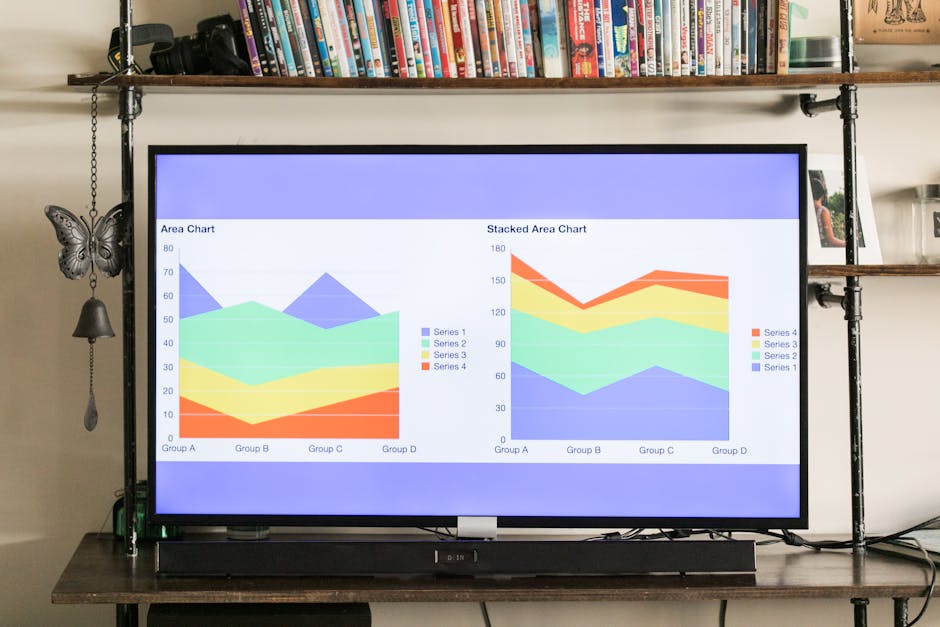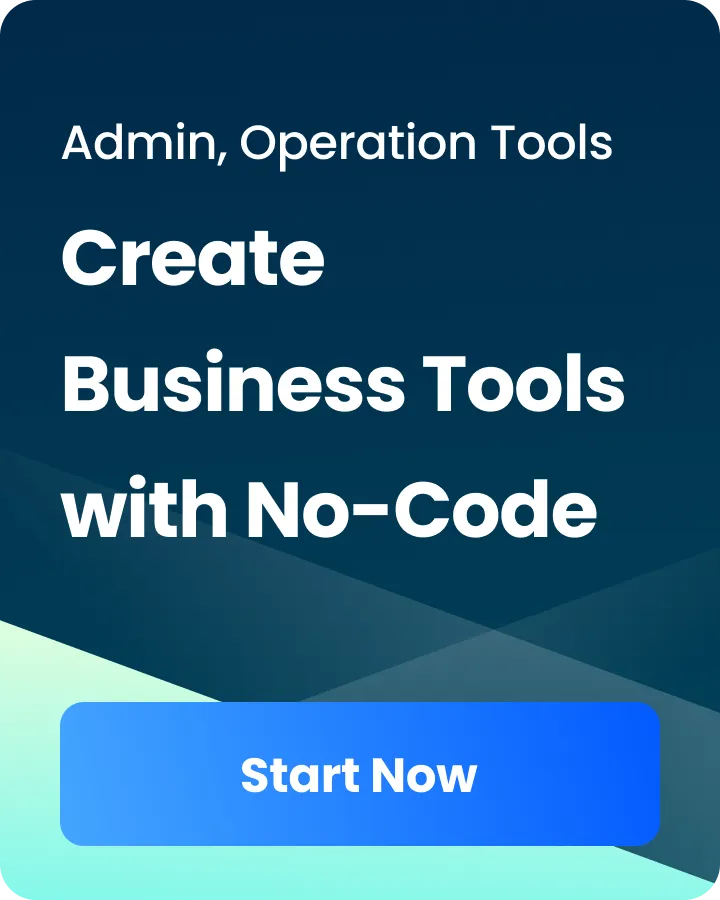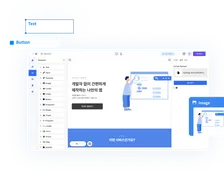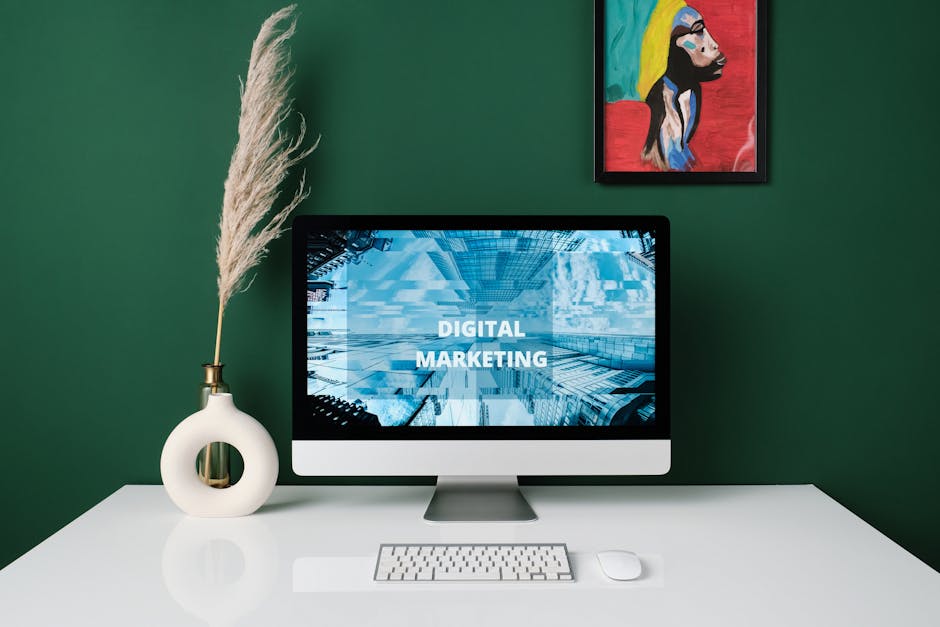Marketing
AI-Driven No-Code Design: Unlock Creativity
Waveon Team
10/30/2025
0 min read
TABLE OF CONTENTS
AI no-code design tools are reshaping how teams conceive, build, and launch digital experiences—without writing a single line of code. For small to medium-sized businesses, marketing teams, entrepreneurs, and startups, these tools provide a creative accelerator: they translate ideas into on-brand websites and landing pages in hours instead of weeks, and enable rapid experimentation that fuels growth. This article explores the state of AI-driven no-code design, how to implement it effectively, and what the future holds for creative work.
If you’re new to this space, it helps to visualize what working in an AI builder actually looks like in practice. The scene below captures the everyday reality for modern teams moving from idea to live page quickly.
Notice the brand panel, content blocks, and real-time preview—these are the building blocks that let you experiment confidently without code.
Ready to see it firsthand? Describe your next campaign in Waveon and generate an on-brand, publish-ready draft in minutes—no dev help needed.
Introduction to AI No-Code Design Tools
AI no-code design tools combine visual editors (drag-and-drop interfaces, blocks, and templates) with artificial intelligence for automated layout, copywriting, image generation, and optimization. The result is a faster, more intuitive way to ship high-quality web pages, microsites, and campaigns—even if you’re not a developer or designer.
Defining AI no-code design tools
AI no-code design tools are software platforms that enable users to design, build, and deploy digital experiences through natural language prompts and visual interfaces. They leverage AI to:
- Generate page structures, content sections, and responsive layouts.
- Propose brand-consistent color palettes, typography, and imagery.
- Produce and localize copy (e.g., headlines, CTAs, product descriptions).
- Automate SEO and accessibility checks.
- Run and suggest A/B tests for conversion optimization.
These capabilities live inside a visual builder, allowing non-technical users to move from concept to live page quickly while maintaining quality and consistency.
Core capabilities to expect
- Prompt-to-page generation for websites and landing pages.
- Intelligent component libraries and templates with brand tokens.
- AI-written copy tailored to tone, audience, and conversion goals.
- Responsive-by-default layouts that adapt across devices.
- Automated accessibility checks and alt text generation.
- Built-in experimentation (A/B, multivariate) and analytics integrations.
- SEO automation, from meta tags to schema and internal linking.
- Collaboration features: roles, approvals, version history, and commenting.
Benefits for SMBs and startups
AI no-code design tools democratize design and development, unlocking several advantages:
- Speed to market: Launch campaigns, product pages, and microsites in hours.
- Cost efficiency: Reduce reliance on custom development and ad hoc agency work.
- Creative independence: Empower marketing and growth teams to iterate freely.
- Consistency at scale: Maintain brand standards across every page and asset.
- Test-and-learn culture: Increase experimentation without heavy dev cycles.
- Resilience: Keep shipping when resources are constrained or priorities shift.
For founders, marketers, and small teams, this translates into more launches, faster feedback loops, and better outcomes—without hiring large development teams.
Current trends and advancements
AI no-code design is evolving rapidly. Key trends include:
- Generative UX: AI turns prompts into multi-section page drafts complete with imagery, layouts, and copy that match your brand style.
- Multimodal creation: Blend text, images, and data inputs to shape design outcomes; AI can refine visuals, write copy, and adapt layout rules together.
- Design tokens and brand kits: Centralized brand variables (colors, typography, spacing) applied automatically across pages for consistent output.
- Real-time personalization: On-page AI adapts content blocks and CTAs based on user segments, traffic sources, or behavior.
- Predictive design suggestions: AI recommends layout tweaks, content hierarchy adjustments, and microcopy changes based on historical performance and best practices.
- Accessibility-first automation: Contrast checks, keyboard navigation guidance, and semantic structure are applied by default.
- Privacy-aware analytics: Built-in measurement that respects consent and regulations while still enabling robust experimentation.
How AI Enhances Design Creativity
AI is not replacing creativity; it’s augmenting it. By removing friction from repetitive tasks and providing intelligent suggestions, AI frees teams to focus on storytelling, positioning, and brand experiences that resonate.
Streamlining creative workflows
The biggest creative bottleneck is often the gap between ideas and execution. AI closes this gap with:
- Brief-to-draft speed: Turn a campaign brief into a working landing page draft in minutes.
- Brand-aware templates: Start from on-brand sections, not blank canvases.
- Smart content assembly: Combine product info, testimonials, and visuals automatically.
- Guided revisions: Ask the AI to “make the hero bolder,” “simplify the pricing section,” or “add an FAQ block” and see instant changes.
- Publishing pipelines: Integrated hosting and analytics to go live without handoffs.
Before diving into the step-by-step workflow, it helps to see how teams map ideas into structure. The scene below shows a wireframe and planning setup that mirrors how pages come together faster with AI assistance.
From sticky notes to structured sections, AI shortens the jump from brainstorming to a polished, on-brand draft.
A practical workflow example
- Capture intent: Enter a prompt like “Create a landing page for a new eco-friendly water bottle targeting fitness enthusiasts, friendly tone, focus on sustainability and performance.”
- Apply your brand kit: Colors, fonts, logos, and voice guidelines are auto-applied.
- Generate: The tool drafts a hero, feature blocks, social proof, and pricing.
- Enrich content: Use AI to refine headlines, generate product visuals, and write FAQs.
- Add variants: Spin up A/B versions of the headline and CTA, auto-schedule a test.
- QA and compliance: Accessibility and SEO checks run automatically.
- Publish and monitor: Go live, then track engagement and conversions.
Traditional vs AI No-Code Workflow: Time and Effort Comparison
Below is a high-level comparison of typical page-build steps. Ranges are illustrative for SMB teams and may vary by scope and complexity.
| Stage/Metric | Traditional design/dev workflow | AI no-code workflow | Approximate time saved per page |
|---|---|---|---|
| Brief to first draft | 4–8 hours (designer + stakeholder reviews) | 10–20 minutes (prompt-to-page) | 3.5–7.5 hours |
| Apply brand standards | 1–2 hours (manual style guide enforcement) | Instant (auto-applied brand kit) | 1–2 hours |
| Content production (copy + images) | 4–8 hours (copywriter + asset sourcing) | 20–40 minutes (AI-assisted drafts + curation) | 3–7 hours |
| Build responsive layouts | 2–4 hours (manual CSS and breakpoint QA) | Responsive-by-default | 2–4 hours |
| QA (accessibility + SEO) | 1–2 hours (checklists, plug-ins) | 5–10 minutes (automated checks) | 50–110 minutes |
| A/B test setup | 1–3 hours (duplicate pages, scripts, traffic split) | 5–15 minutes (built-in experiments) | 55–165 minutes |
| Publish + analytics wiring | 1–2 hours (handoffs, tagging, verification) | 5–15 minutes (one-click publish + native analytics) | 45–115 minutes |
Video: Learn the essentials of A/B testing for landing pages—how to craft hypotheses, set up control and variant pages in a no-code builder, pick the right primary metrics, and interpret statistical significance so you can make confident, data-backed decisions.
Turn this workflow into action: Open Waveon, paste your brief, and spin up your first A/B test—generation, variants, and publishing all in one place.
Intelligent design suggestions
Rather than guessing which layout or message will convert, AI draws from patterns, design heuristics, and real-world performance signals to recommend changes:
- Layout intelligence: Suggests different section orders, hero compositions, and typography scales for clarity and impact.
- Palette and contrast tuning: Ensures readability and brand alignment.
- Copy optimization: Proposes headline variations, benefit-driven bullets, and action-oriented CTAs aligned to audience intent.
- Image curation: Recommends imagery that aligns with your brand and message, or generates custom visuals on the fly.
- Conversion cues: Highlights social proof placements, trust badges, and friction reducers.
From data to design decisions
- Analytics-powered insights: Connect your analytics to feed the AI with performance data, enabling targeted design recommendations.
- Segment-specific experiences: Show different hero copy for paid search traffic vs. organic visitors.
- Predictive impact: See estimated lift from proposed changes, and prioritize accordingly.
- Structured experiments: Automatically create and manage variants, ensuring statistically sound comparisons.
Video: Watch a practical conversion optimization guide covering page hierarchy, value propositions, social proof placement, form friction reduction, and persuasive CTAs—complete with examples you can replicate in no-code builders.
Use these principles alongside the AI-driven recommendations and analytics-powered insights outlined here to iterate quickly and systematically.
Automating repetitive tasks
Creative teams spend significant time on work that doesn’t require unique ideation. AI takes over:
- Asset resizing and responsive adjustments across breakpoints.
- Metadata, alt text, and schema generation for SEO and accessibility.
- Internal linking suggestions to strengthen content clusters.
- Localization and translation with brand voice preservation.
- Form creation, validation, and analytics wiring.
- QA checklists: broken links, image compression, and lazy loading.
- Compliance and governance checks to meet policy and regulatory needs.
Guardrails and governance
- Role-based access: Writers, designers, and approvers work in controlled spaces.
- Version history: Roll back changes and compare iterations.
- Brand rules: Enforce minimum logo sizes, color contrast, and tone guidelines.
- Audit trails: Keep records for compliance and quality assurance.
Overcoming Common Design Challenges
Even experienced teams face hurdles like keeping branding consistent, balancing aesthetics with performance, and meeting deadlines. AI no-code tools are purpose-built to smooth these rough edges.
Design consistency across platforms
Maintaining consistency across web, mobile, and campaign pages can be hard—especially as teams grow. AI ensures uniformity through:
- Centralized brand kits: Colors, fonts, spacing, iconography, and logo rules applied globally.
- Reusable components: Hero blocks, testimonials, pricing tables, and footers synced across pages.
- Automated responsive logic: Device-aware spacing, images, and typography scales.
- Intelligent guardrails: Alerts when content breaks brand or accessibility rules.
Multi-brand scenarios
If you manage multiple brands or sub-brands:
- Define brand profiles: Separate tokens, voice settings, and approved assets per brand.
- Enforce switching: Toggle brand profiles to transform the same layout for each product line.
- Share patterns, not assets: Maintain consistent UX principles while preserving brand distinction.
Optimizing user experience
Good design must also be fast, accessible, and intuitive. AI supports UX excellence by:
- Hierarchy and readability checks: Ensures scannable content and logical section order.
- Performance optimization: Image compression, lazy loading, and code minimization built in.
- Form enhancements: Adaptive fields, real-time validation, and progressive profiling.
- Micro-interaction suggestions: Subtle animations and feedback that improve clarity without harming performance.
- Personalization prompts: Tailor CTAs and benefits to the visitor’s intent and lifecycle stage.
Accessibility by default
- Alt text automation: Descriptions generated for all images with human-edited overrides.
- Contrast testing: Real-time alerts and auto-fixes for insufficient contrast.
- Keyboard navigation: Guidance for focus order and clear skip links.
- Semantic structure: Clear heading hierarchy and ARIA roles applied consistently.
- Reading level checks: Align copy complexity to your audience and compliance requirements.
Time-saving techniques
AI no-code design tools multiply output while preserving quality:
- Starter templates: Industry-specific page templates with proven structures.
- Snippet libraries: Reuse FAQs, feature blocks, and conversion elements.
- Batch generation: Create multiple page variants for campaigns (e.g., for each location or persona).
- Multi-edit actions: Apply style or copy changes across dozens of pages in one step.
- Automated checklists: Spellcheck, link validation, alt text, and SEO fields completed by default.
The 80/20 prioritization matrix
Focus on high-impact changes:
- Identify the 20% of pages driving 80% of conversions and prioritize improvements there.
- Use AI to propose quick-win optimizations (headline, hero, CTA) before deeper redesigns.
- Trigger automation: Set rules to auto-suggest changes when metrics dip below thresholds.
Implementing AI No-Code Tools in Your Business
Getting started requires clarity on goals, team readiness, and success metrics. With a thoughtful rollout, you can scale creative output without chaos.
Choosing the right tool for your needs
Before selecting a platform, define your must-haves:
- Use cases: Websites, landing pages, microsites, product launches, event pages, content hubs.
- AI depth: Prompt-to-page, copy generation, image generation, and optimization features.
- Brand control: Design tokens, brand kits, and component libraries.
- Experimentation: Built-in A/B testing and insights.
- Integrations: CRM, marketing automation, analytics, and CMS compatibility.
- Performance and SEO: Core Web Vitals, schema, sitemaps, and technical SEO controls.
- Security and compliance: SSO, role-based access, SOC 2/ISO alignment, data residency options.
- Scalability and governance: Multi-site support, versioning, approvals, and audit trails.
- Pricing and TCO: Transparent pricing, predictable scaling, and support options.
See it in context: Evaluate Waveon against this checklist—start free or request a 15-minute demo to watch your brand kit applied live to a new page.
Quick evaluation checklist
- Can non-technical teammates ship a page from a prompt within an hour?
- Does the platform enforce brand and accessibility standards automatically?
- Are A/B tests and analytics integrated and easy to interpret?
- Can we manage multiple brands or locales within one workspace?
- Is it easy to export, back up, or migrate content if needed?
- What training and onboarding resources are available?
Training your team for transition
Adoption succeeds when people feel confident and supported.
- Start small: Pilot a few pages or campaigns with a cross-functional squad.
- Document standards: Create a brand kit, tone of voice guide, and component usage notes.
- Establish roles: Define who drafts, reviews, and approves changes.
- Run workshops: Host hands-on sessions for marketers, designers, and product stakeholders.
- Build a champion network: Identify power users who can mentor others.
- Iterate playbooks: Update SOPs as you learn which workflows deliver the most value.
Role-specific ramp-up plans
- Marketers: Learn prompt engineering for copy, experimentation basics, and on-page SEO.
- Designers: Curate component libraries, set tokens, and review visual consistency.
- Founders/Leaders: Define goals, approve governance, and track ROI.
- Sales/CS: Learn how to spin up demo pages, event pages, or support hubs swiftly.
Measuring productivity and creativity gains
Define baseline metrics and track improvements to demonstrate value:
- Time-to-first-draft: How quickly can a team produce a workable page?
- Time-to-publish: Total cycle time from idea to live page.
- Publish velocity: Pages launched per week/month.
- Experiment coverage: Percentage of pages with active A/B tests.
- Conversion performance: Form fills, trials, purchases, or other primary goals.
- Brand consistency: Adherence to design tokens and component usage.
- Content reuse: Frequency of snippet and component reuse across properties.
- Accessibility score: Automated and manual audit results over time.
Here’s what it looks like when teams rally around the right KPIs and dashboards. The image below reflects how leaders keep a pulse on conversion gains and experiment coverage.
With clear visibility, it’s easier to prioritize high-impact changes and validate what’s working across campaigns.
Analytics stack essentials
- Event tracking: Implement structured events for key interactions and conversions.
- Experimentation framework: Predefine guardrails for test duration and sample sizes.
- Attribution: Connect campaigns to outcomes to inform design iterations.
- Dashboards: Centralize KPIs for stakeholders with drill-down capabilities.
- Privacy and consent: Ensure measurement complies with regulations and user expectations.
Case Studies: Success Stories
Real-world outcomes show how AI no-code design tools change the pace and quality of creative work. The examples below illustrate common scenarios and the types of gains teams report when they adopt AI-driven workflows.
Small business transformation
A boutique wellness retailer needed seasonal landing pages for product bundles, gift guides, and local events. Historically, each page required external design and development help, which limited how many campaigns they could run.
What changed with AI no-code tools:
- Prompt-to-template creation let the owner produce page drafts in minutes.
- AI copywriting ensured consistent voice and value-focused messaging across product lines.
- Built-in SEO fields and schema increased visibility for local searches.
- Reusable components (bundles, testimonials, FAQs) cut production time for each new campaign.
- A/B testing of headlines and CTAs became routine, with insights guiding subsequent launches.
Resulting advantages:
- More campaigns shipped during peak seasons without hiring additional staff.
- Pages maintained a cohesive brand look despite rapid turnaround.
- Experimentation informed product positioning and promotional strategies.
Marketing team innovation
A B2B SaaS marketing team struggled with bandwidth for webinars, product launches, and content-led campaigns. They needed to scale without overloading design and engineering.
How AI no-code design tools helped:
- Role-based workspaces enabled content marketers to generate landing pages from briefs.
- The design team curated a component library with brand tokens, ensuring visual consistency.
- AI recommended section order, social proof placement, and value propositions aligned to audience segments.
- Dynamic snippets standardized product messaging and security/compliance notes across pages.
- Analytics integrations surfaced conversion patterns—e.g., shorter forms yielding stronger MQL quality in specific segments.
Outcome:
- Marketing increased publish velocity substantially while keeping brand consistency intact.
- Stakeholders shifted from “request and wait” to collaborative, fast feedback loops.
- Insights from A/B tests directly informed messaging across ads, emails, and sales collateral.
Here’s a glimpse of how collaborative build sessions come to life as teams iterate in real time. You’ll often see cross-functional partners co-creating and aligning on structure, copy, and CTAs.
This collaborative rhythm replaces slow handoffs with rapid, on-brand iteration.
Startup scaling success
A Series A startup needed to support rapid product iteration and international expansion. They required multilingual landing pages, changelog updates, and investor-ready product narratives—fast.
AI no-code design in action:
- Prompt-based page generation produced localized versions aligned with brand voice.
- Automated accessibility and performance checks ensured quality at scale.
- Integration with analytics and CRM tracked the impact of launches on trials and demos.
- Playbooks enabled non-technical teammates (sales, CS) to launch resource pages tailored to niche verticals.
Impact:
- Faster market entry in new regions thanks to quick localization cycles.
- Clear governance enabled wide participation without compromising quality.
- Continuous optimization kept conversion rates healthy during rapid growth.
Future Outlook: AI in Creative Domains
As AI becomes more capable, the boundary between strategy, design, and development will blur. Creators will orchestrate systems rather than craft every pixel by hand, focusing more on narrative, ethics, and user value.
To envision what’s next, imagine AI copilots that shape interfaces on the fly based on goals and constraints. The image below represents that emerging, adaptive design paradigm.
This future centers on intent-driven, modular UI systems that respond to user context in real time.
Emerging trends to watch
- Generative UI systems: AI agents assembling modular interfaces based on goals, constraints, and user context.
- Synthetic user testing: AI models simulating user flows to predict friction and recommend fixes before launch.
- Conversational building: Voice or chat interfaces to “ask” for design changes across multiple properties.
- Context-aware personalization: Real-time content orchestration that respects privacy while maximizing relevance.
- On-device inference: Faster, private AI features (e.g., image enhancement, layout suggestions) running locally.
Long-term implications for design
- Designers as directors: Creative leaders orchestrate systems, set constraints, and curate outcomes rather than manually producing every asset.
- Standards and governance: Stronger emphasis on tokens, component libraries, and policy frameworks to prevent fragmentation.
- Ethics by design: Bias mitigation, content authenticity, and accessibility become integral to the creative process.
- Sustainable creativity: Efficient automation reduces wasteful iterations and supports greener digital operations.
Innovations on the horizon
- Brand-from-anything: Instant brand kits derived from a logo, website, or mood board—applied consistently across all surfaces.
- Multi-sensory design: AI-assisted motion, audio, and haptic patterns enabling richer product storytelling.
- AR-ready experiences: No-code 3D and AR assets generated from product specs or photos.
- Universal design tokens: Cross-platform standards that keep brand and UX consistent across web, mobile, and emerging interfaces.
- Collaborative AI peers: Multiple specialized agents (copy, layout, performance, accessibility) working in tandem on each page.
Conclusion: Ship Faster, Stay On-Brand, Learn Every Week
AI no-code design tools turn ideas into live, conversion-ready experiences—quickly, consistently, and at lower cost. Here are the big takeaways:
- What these tools do: Prompt-to-page generation, brand kits, responsive layouts, accessibility and SEO automation, and built-in experimentation.
- Why they matter: Faster launches, reduced reliance on dev resources, consistent brand execution, and a test-and-learn culture that compounds results.
- How creativity improves: AI accelerates briefs to drafts, offers intelligent design and copy suggestions, and automates repetitive tasks so teams focus on storytelling and strategy.
- How challenges are solved: Centralized tokens and components keep design consistent; AI-guided UX, performance, and accessibility ensure quality; governance features protect brand and compliance.
- How to implement: Choose a platform that matches your use cases and governance needs, train teams with clear roles and playbooks, and measure impact with velocity, consistency, and conversion KPIs.
- Proof in practice: SMBs, marketing teams, and startups increase publish velocity, localize faster, and learn from experiments that feed back into every campaign.
- Future-ready foundation: Generative UI, synthetic testing, and conversational building will further streamline creation while elevating strategy and ethics.
Build your next high-performing page with Waveon—generate, optimize, and publish in under an hour. Start free today and turn your ideas into live, on-brand experiences that keep improving with every iteration.












